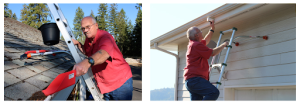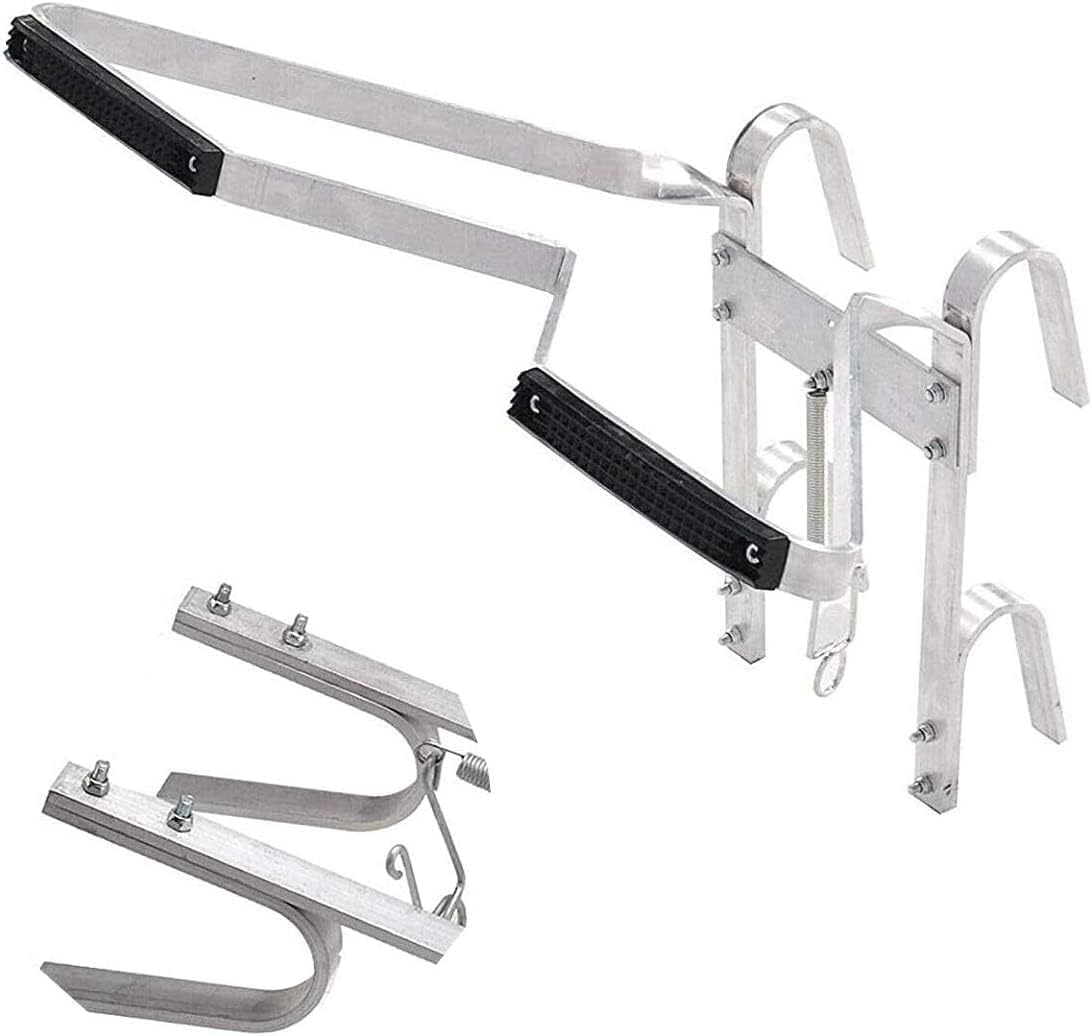The Role of Ladder Stand-Offs in Professional Roofing and Construction Work
Working at heights is one of the most dangerous aspects of roofing and construction. Every year, accidents occur because ladders slip, shift, or lean on unstable surfaces. For professionals, one small mistake can lead to serious injuries or property damage. That’s where ladder stand-offs, also known as ladder stabilisers or ladder stays, play a crucial role in keeping workers safe and efficient on the job.
This article explains what ladder stand-offs are, why they are essential in professional roofing and construction, how they improve safety and efficiency, and which types are best suited for different tasks.
Why Roofing and Construction Professionals Need Ladder Stand-Offs?
In construction and roofing, tasks often involve working on uneven surfaces, soft ground, or fragile materials. Traditional ladders, when placed directly on a wall or edge, can easily wobble or slip. A stand-off attached to the ladder eliminates these risks by providing the ladder with a much wider base of contact and ensuring even pressure distribution.
Here are some of the biggest reasons professionals rely on these stand-offs:
Enhanced Stability
The wider span of a stand-off provides two separate points of contact, reducing the chances of sideways movement. This stability is essential for roofers installing shingles, cleaning gutters, or inspecting tiles, where precision and balance are critical.
Protection of Work Surfaces
Ladders leaning directly against painted walls, gutters, or tiles can cause scratches or dents. Stand-offs protect these surfaces by keeping the ladder several inches away, ensuring that no direct pressure is applied.
Better Working Angle
A ladder placed too close to the wall can feel steep and unstable. With a stand-off, the ladder sits at a safer, more comfortable angle, reducing strain on the worker’s legs and making movement up and down easier.

Access Around Obstacles
Roofers often deal with overhangs, window ledges, or uneven surfaces. Stand-offs allow the ladder to sit clear of such obstacles, giving direct access to gutters, rooflines, and upper windows.
Improved Efficiency and Confidence
When workers feel more stable, they can focus better on the task. Confidence reduces hesitation, allowing faster and safer work, especially when tools, materials, or power equipment are being handled at heights.
How Ladder Stand-Offs Improve Workplace Safety
According to the UK’s Health and Safety Executive (HSE), thousands of ladder-related accidents occur annually, often due to loss of balance or slippage. A properly fitted stand-off helps to reduce these incidents significantly.
Here’s how:
Prevents Sideways Movement
Without a stand-off, even a slight shift in body weight can cause a ladder to twist or slip. Stand-offs widen the ladder’s top contact area, acting as stabilising arms that keep it centred and balanced.
Reduces Wall Pressure
By distributing weight evenly across two points, a stand-off prevents damage to walls and reduces the risk of the ladder slipping due to poor grip.
Improves Top Stability on Uneven Surfaces
When working on irregular surfaces like brickwork, pipes, or fascia boards, stand-offs keep the ladder stable by maintaining consistent contact, even when the surface isn’t perfectly flat.
Allows Safer Overreach
Although overreaching should always be avoided, a stand-off offers a wider safe zone, reducing the risk of the ladder tipping when workers stretch slightly to reach certain areas.

Common Types of Ladder Stand-Offs Used in Construction
Different jobs require different types of stand-offs. Choosing the right one depends on the nature of the task, ladder size, and the surface being worked on.
V-Shape Ladder Stand-Off
Designed for corners and poles, V-shape stand-offs are perfect for roofers or painters working around downpipes, posts, or chimney edges. The “V” cut allows the ladder to fit securely against uneven or angled surfaces.
I-Shaped Ladder Stand-Off
The I-shape stand-off is the most common design used in roofing. It provides a wide horizontal bar, keeping the ladder stable against flat surfaces like walls or windows. It’s ideal for gutter cleaning, rendering, and wall repairs.
Corner Ladder Stand-Off
This type is specifically designed for positioning ladders around building corners, allowing workers to reach two adjoining walls without constantly moving the ladder.
Roof Ladder Stand-Off Arms
Roof stand-off arms are extensions that keep the ladder elevated from fragile roof tiles, ensuring that the ladder rests securely without causing breakage. These are crucial for roof maintenance and tile replacement.
Adjustable Stand-Offs
Some professional models allow for angle and width adjustment, making them highly versatile across different job types. These are ideal for construction firms that deal with varied projects and need adaptable equipment.
For professionals who want durable and easy-to-fit options, explore the Kirmell V-Shape and the I-Shape Ladder Stand-Off. Both models are made from high-quality steel and designed to keep your ladder stable on corners, walls, and roofs, ensuring safe and efficient work.

Kirmell Universal Ladder Stand-Off — £20.00
Best Practices for Using Ladder Stand-Offs Safely
While stand-offs increase safety, incorrect installation or use can defeat their purpose. Here are some professional best practices to follow:
Ensure Proper Attachment
Always read the manufacturer’s instructions before use. Securely attach the stand-off to the ladder’s rungs or stiles using the provided brackets. Double-check tightness before climbing.
Inspect Regularly
Before every use, inspect the stand-off for cracks, bends, or loose fittings. Metal fatigue or corrosion can compromise its strength over time.
Use on Solid, Level Ground
Even with a stand-off, a ladder must be placed on a firm, level surface. Use ladder mats or stabilising bases if necessary to prevent slipping.
Avoid Overloading
Check the stand-off’s weight rating and ensure it matches the ladder’s maximum load. Overloading can stress the attachment and cause failure.
Maintain Correct Angle
The recommended safe angle for ladder placement is roughly 75° (the “1 in 4” rule: one unit out for every four units up). A stand-off helps maintain this, but always double-check positioning before use.
Check out more details at How to Use Ladder Stand-Off Safely.

Do Not Overreach
Even with added stability, never lean too far to the side. Always climb down and reposition the ladder instead of stretching beyond safe reach.
Benefits Beyond Safety: Productivity and Professionalism
Professional roofing and construction companies know that time is money. Equipment that improves safety often also enhances productivity and professionalism.
Faster Work Setup
A stand-off eliminates the need for temporary supports or constant repositioning. Workers can set up ladders quickly, even around complex surfaces.
Cleaner Work Results
Since ladders no longer rest directly on walls or gutters, paint and plaster finishes stay intact. This prevents rework and maintains the property’s professional appearance.
Extended Equipment Lifespan
By preventing excessive wall pressure and reducing strain on the ladder’s upper rungs, stand-offs help extend the life of ladders and maintain their shape over time.

Choosing the Right Ladder Stand-Off for Your Job
When choosing a stand-off for professional use, keep the following factors in mind:
- Material: Select aluminium or steel models for maximum strength, long-lasting durability, and a good balance of weight and stability.
- Width: A wider span, ideally between 600 mm and 900 mm, provides greater stability and prevents sideways movement while working.
- Type: Use a V-shape stand-off for corners, poles, and uneven areas, and an I-shape stand-off for flat surfaces such as walls, gutters, and windows.
- Adjustability: If you work on varied projects, choose an adjustable stand-off with extendable arms to suit different applications.
- Compatibility: Make sure the stand-off fits firmly on your ladder’s rungs or sides for a secure, stable connection.
These points will help you pick the right stand-off that ensures safety, balance, and reliability for every roofing or construction task.
Conclusion
In professional roofing and construction, safety and efficiency go hand in hand. A ladder stand-off may look like a simple attachment, but it makes a significant difference in how safely and effectively workers can perform their tasks.
By increasing ladder stability, protecting work surfaces, and providing better access to challenging areas, stand-offs have become an essential part of modern site safety. Whether you’re repairing a roof, cleaning gutters, or painting upper floors, investing in the right stand-off ensures not only protection but also professionalism in every job.
FAQs
Are ladder stand-offs necessary for roofing work?
How do I attach a ladder stand-off correctly?
Can I use a ladder stand-off on any type of ladder?
How far should a stand-off keep the ladder from the wall?
Where can I buy reliable ladder stand-offs for professional use?




